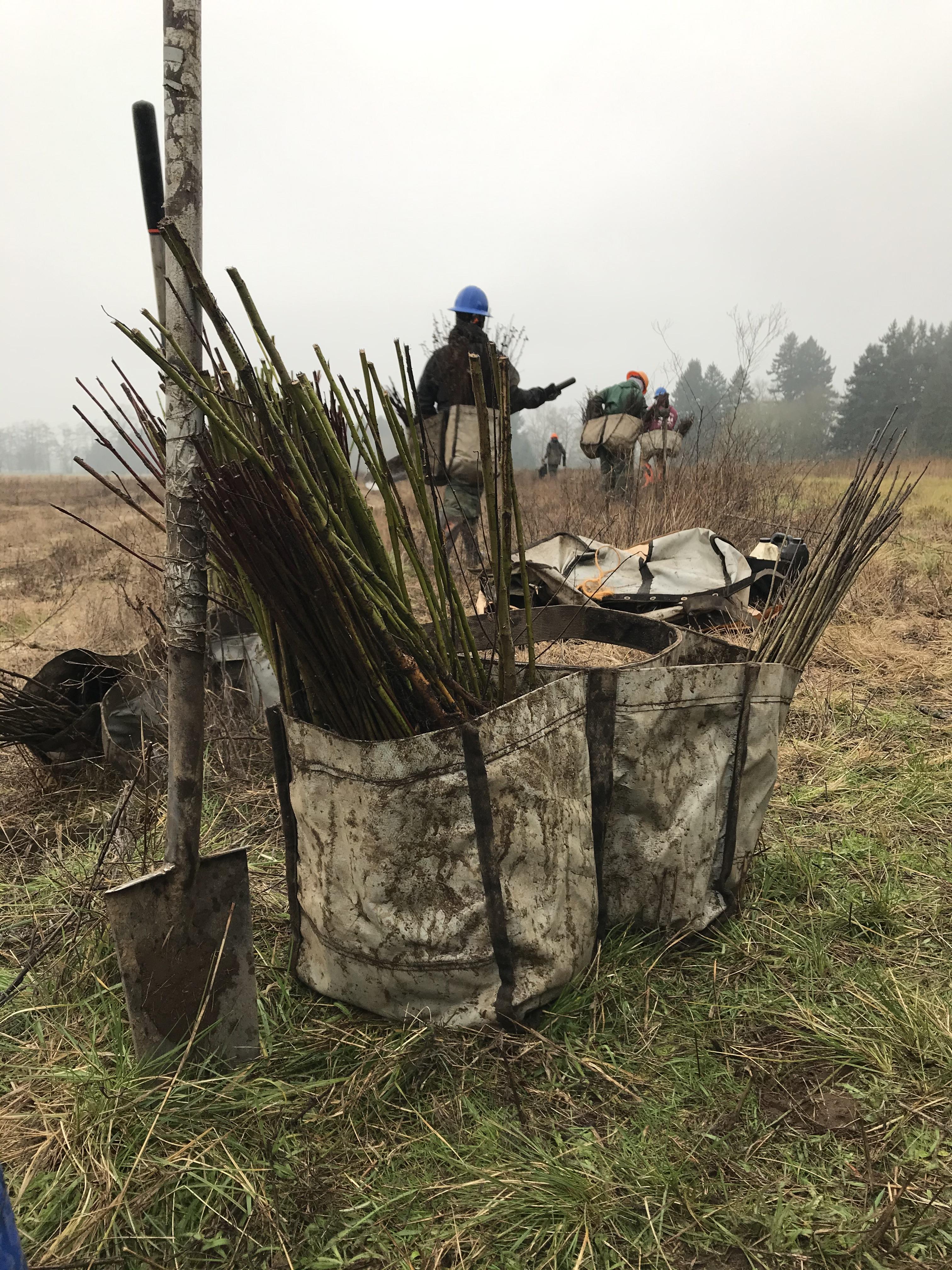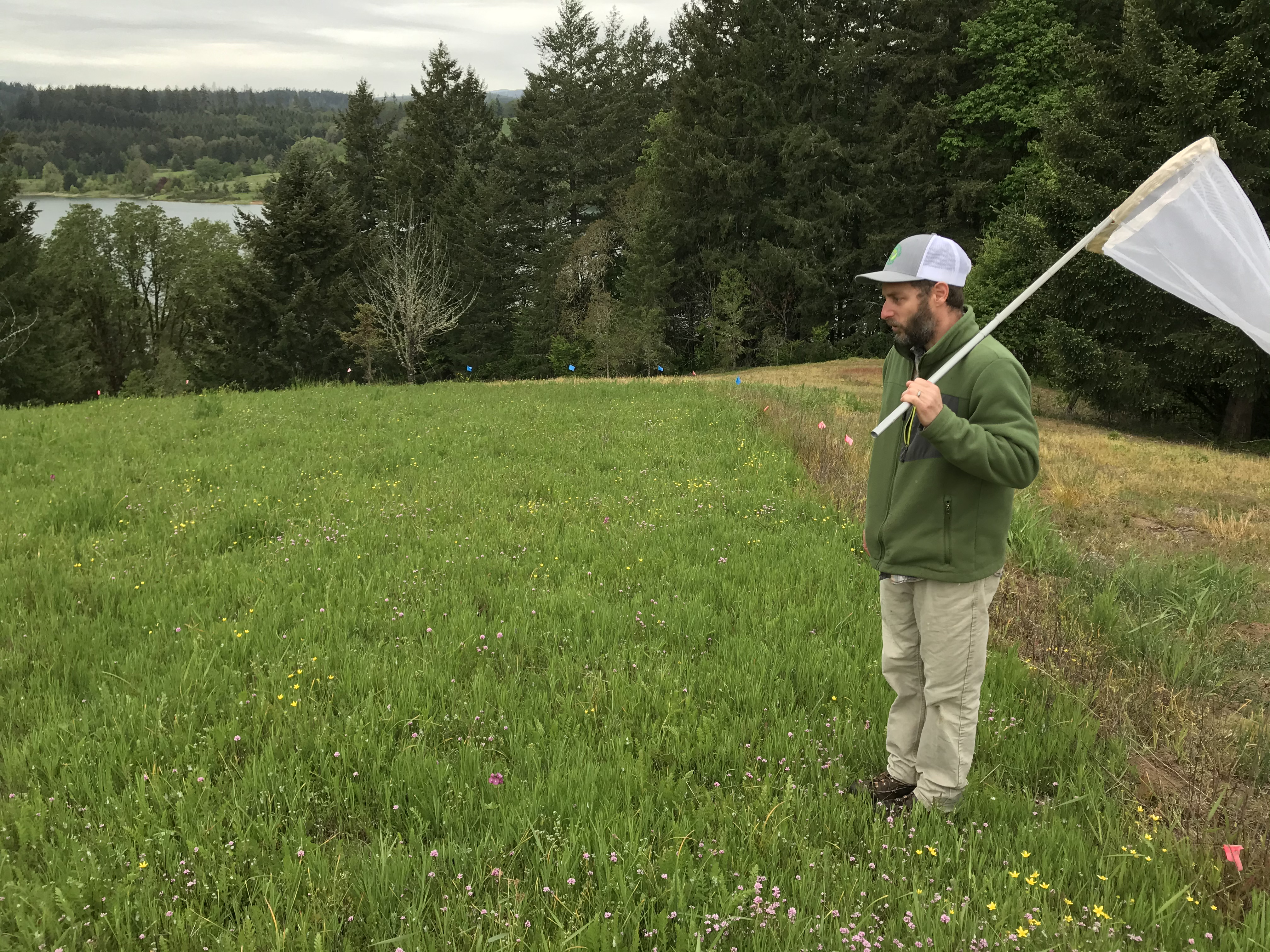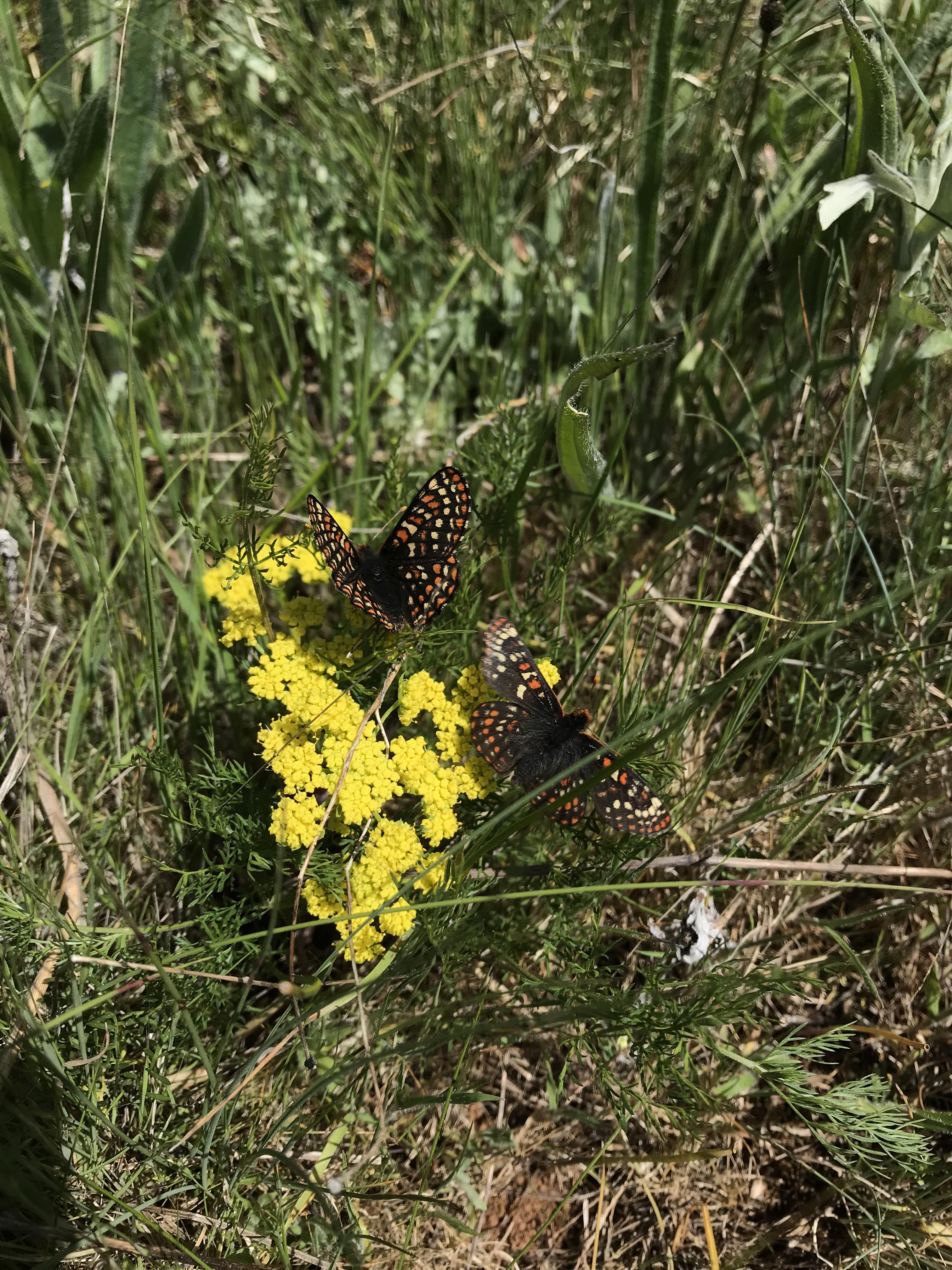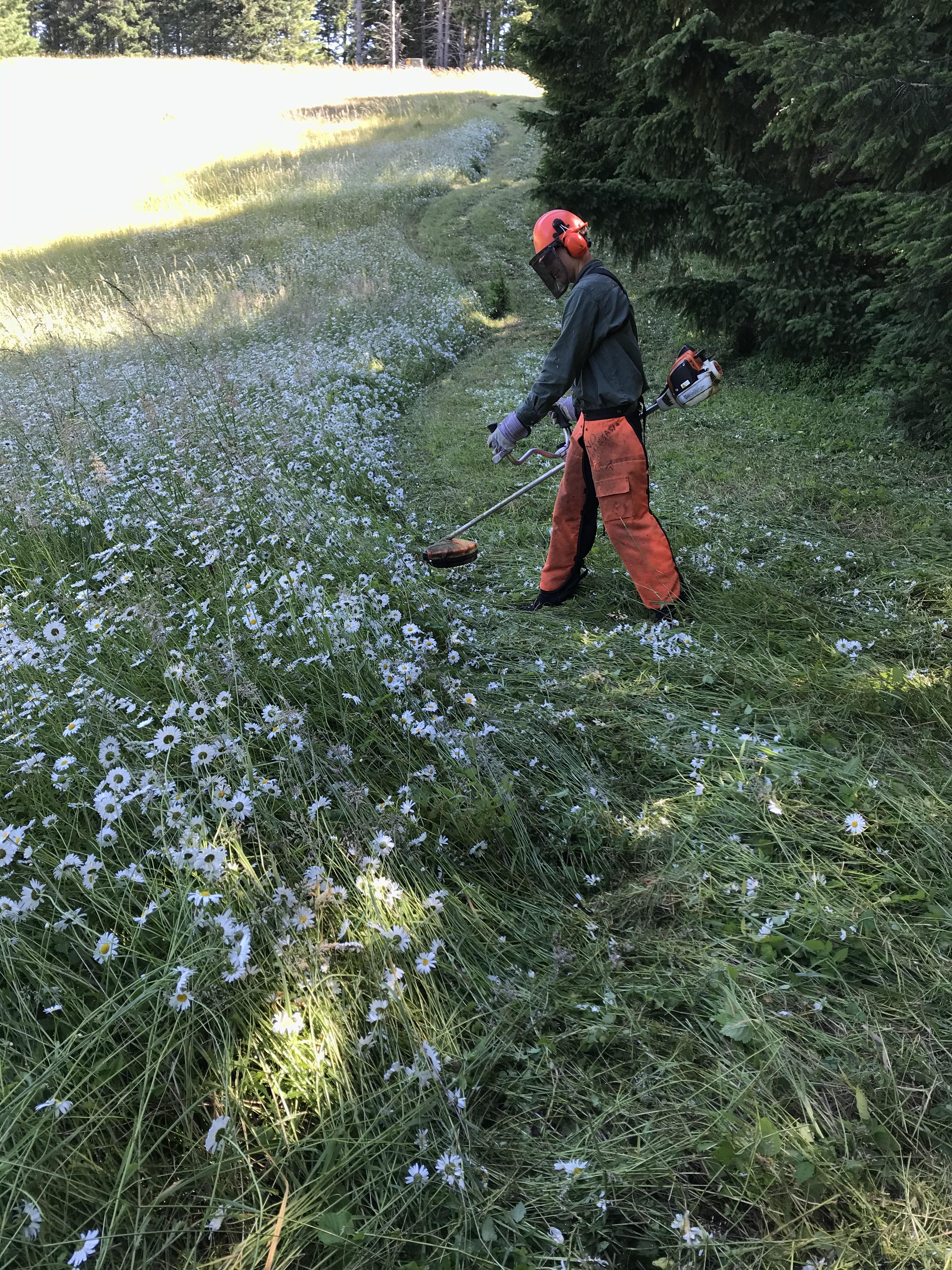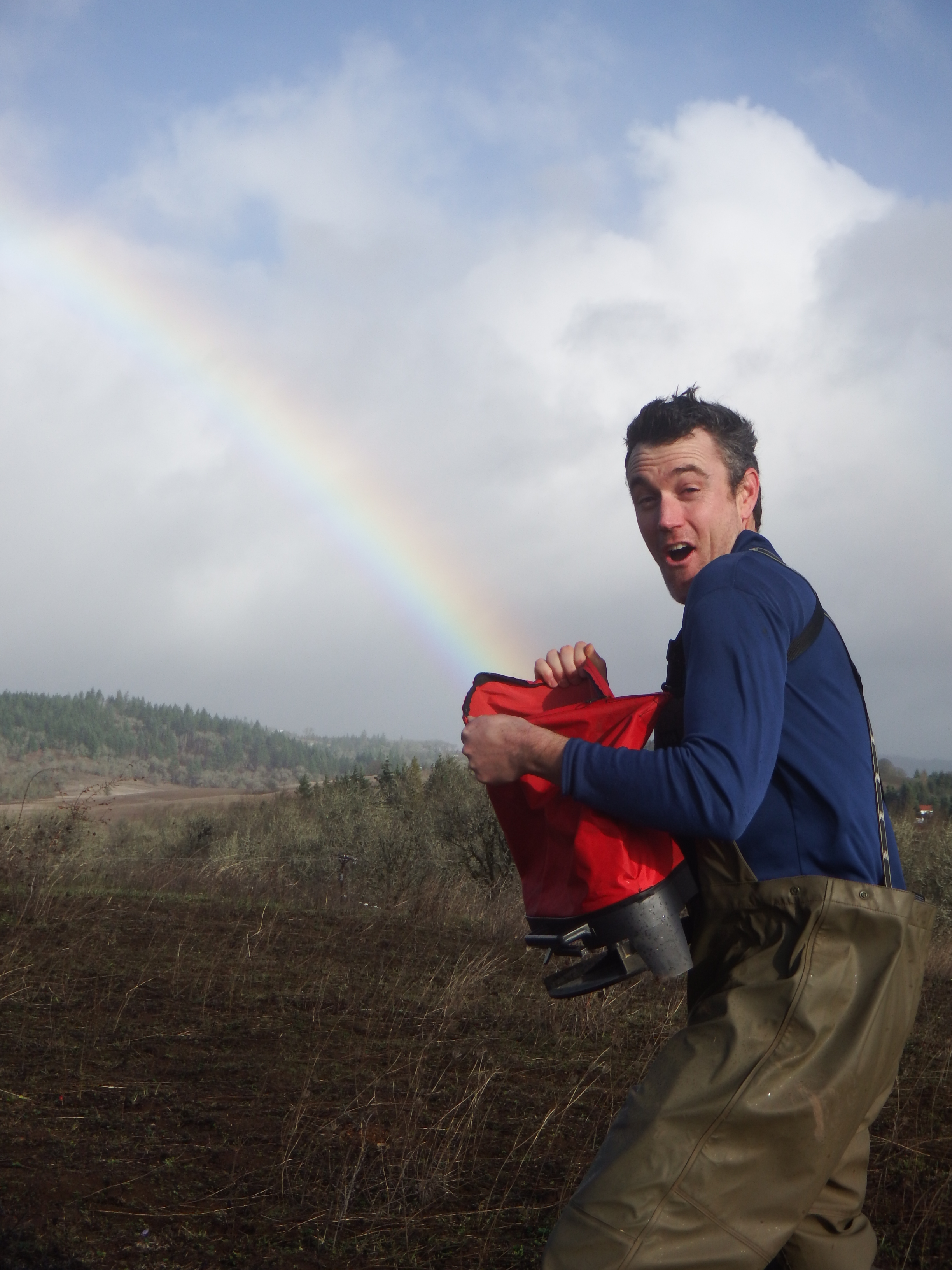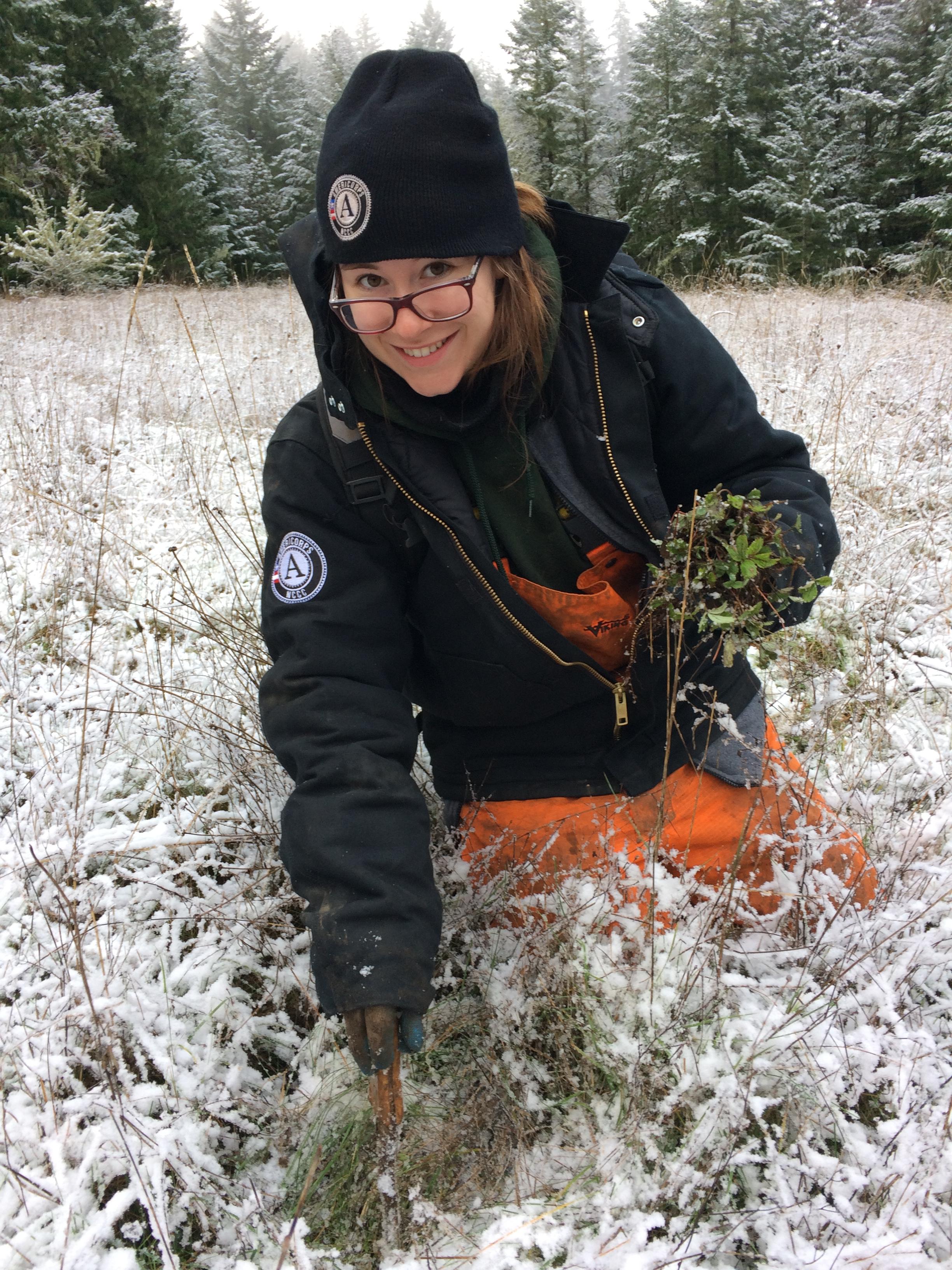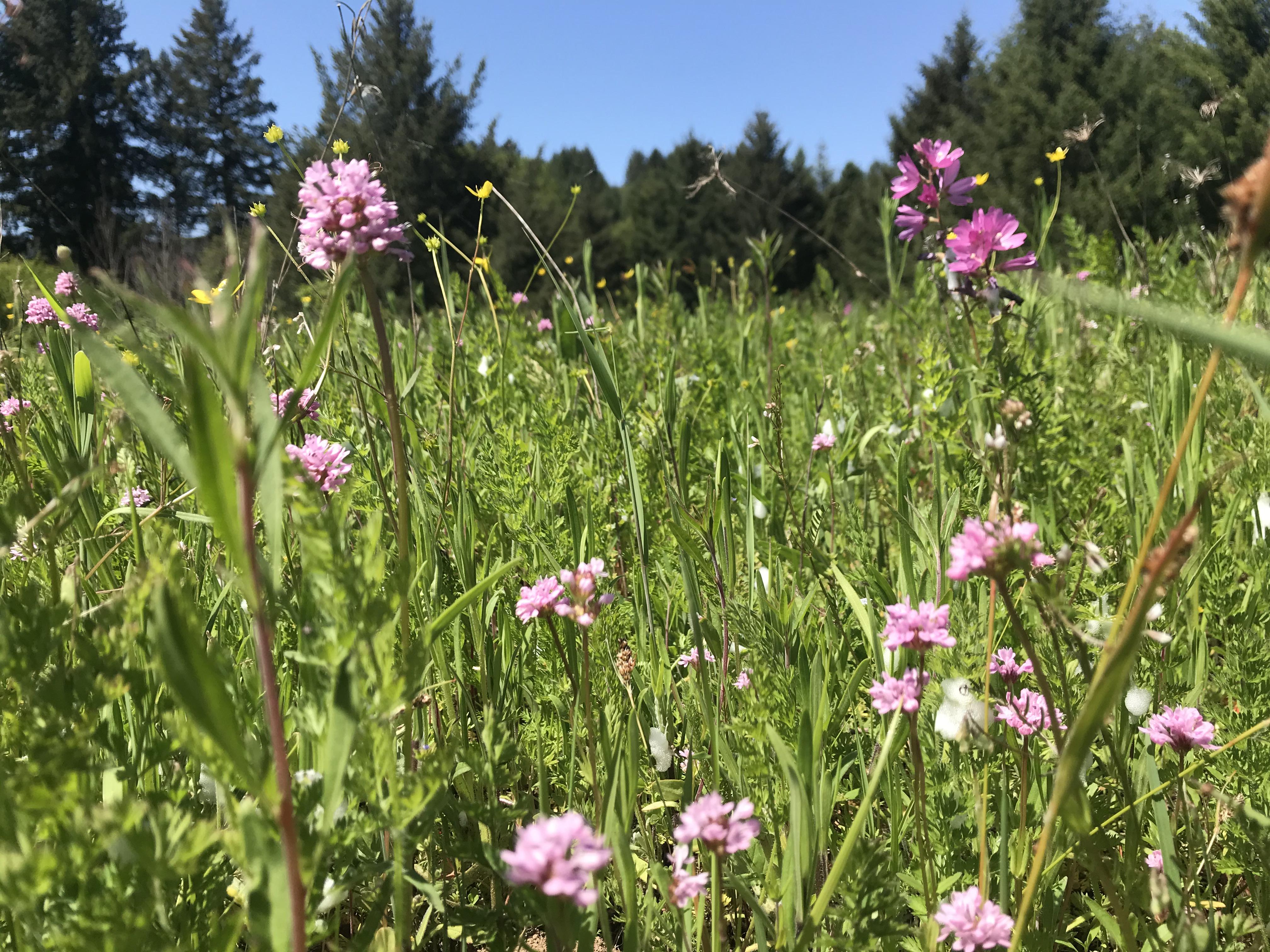
Working Through the Seasons
By Andy Neill
September 2021
Although we implement habitat restoration projects year round at IAE, the fieldwork we do changes with the seasons, with some times of the year busier than others. We thought we would walk our readers through a “year in the life” of a restoration practitioner at IAE, so that you can get a sense of the rhythm of the seasons from our point of view!
In the winter, when it is cold and rainy, the plants and animals are either dormant or growing very slowly. This is the perfect time to shift our work inside to review the past year’s efforts and, formalize our plans for the upcoming year. Occasionally we make it outside in the winter to visit project sites, to fell and remove trees to enhance and expand meadow or prairie habitat (Figure 1) or plant shrubs and trees (Figure 2), but for the most part we hunker down inside.
As the days get longer and warmer in the spring, seeds begin to germinate, plants grow a bit faster and the animals, particularly the caterpillars, emerge from the duff and begin to feast on the tender new leaves. Spring is when we conduct weed assessments, begin herbicide treatments to control problem weeds, and assess the plantings and seedings completed in prior years (Figure 3). By late spring we start surveys for rare plants, weeds and of Fender’s blue (Figure 4) and Taylor’s checkerspot butterflies (Figure 5). If we have done things right, the butterflies will be nectaring and laying eggs in new or enhance habitat created by the restoration efforts of IAE and our partners.
By the time summer rolls around, many plants and butterflies have completed their life cycle and laid eggs, and the spring-blooming plants are starting to produce seeds. Once plants begin to flower, herbicides become significantly less effective since plants are focusing all their effort to flower and the production of seeds. Herbicide applications slow down, and our work shifts to manual and mechanical weed treatments including hand pulling, mowing, brush or string cutting, and saw work (Figure 6).
As the weather gets hot and dry, there are new challenges for our field work. Periodic heatwaves sometimes force us to stay inside and fire restrictions throughout the valley often prevent us from using small engines. Smoke from fires like we experienced in the Willamette Valley in 2020 sometimes prevent us from working outside. All of these factors give us a chance to get back to our desks and confirm native seed orders for fall sowing and plan treatments to control woody species. Late summer is also the perfect time for us to take time off to live our other lives outside of IAE before autumn rolls in and things get busy again.
Fall is usually a really busy time in the restoration world. It is a good time to apply herbicide to most deciduous woody species because this is when shrubs and trees are removing nutrients from leaves and limbs and transporting the nutrients down to the roots. This effectively translocate herbicides to the roots and generally has the desired effect of killing the plant. Fall is also time for seeding and planting. Once we have acquired native seed for sowing at our restoration sites, we create the final seed mix and do our best to time sowing of seeds with the onset of the fall rainy season (Figure 7). Timing is critical, because if we are too early, we risk losing seed to animals or early germination followed by desiccation. If we seed too late, we risk getting equipment stuck in the mud or seeds not having enough time in the cool, wet soil to break their dormancy. If we time it perfectly, the rains start the day after our final seed sowing day. The same goes for planting - if we plant too early, the plants can dry out and die. We have more flexibility when it comes to planting later in the winter, but who wants to plant in the rain and wind in 34oF weather or into frozen earth (Figure 8)? We might as well go inside and work on some reports and planning for the following year! And so we start the process all over again...
Restoration
Research
Education
Get Involved
Contact
Main Office:
4950 SW Hout Street
Corvallis, OR 97333-9598
541-753-3099
[email protected]
Southwest Office:
1202 Parkway Dr. Suite B
Santa Fe, NM 87507
(505) 490-4910
[email protected]
© 2024 Institute for Applied Ecology | Privacy Policy

